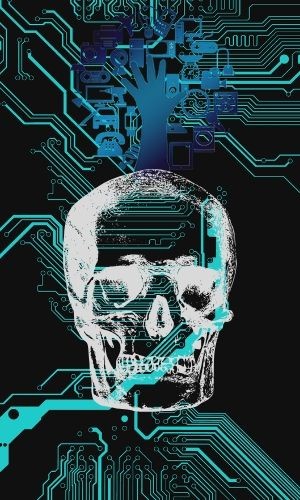
As the name implies, AI or artificial intelligence is not natural, and it is a simulation of how the human mind works. Much like a machine, the human brain controls all function of an organism. For example, how the mind managed active functions and another is autonomous responses that are basically knee-jerk responses. More technical know-how is available to give machines an iota of sentience, like self-driving cars and interactive robots that can manage without human assistance.
Look at the brain, once scientists could only dream of making something as good as the human brain. Now we have computers that are made up of electronic components, to make computer approximate what is human thinking. For example, every biological component has an electronic part that approximates how machine work in the real world. AI constructs have sensors that are similar to sight, hearing, touch, and feeling that is almost similar. Human operate on the same idea, but men are biological machines based on carbon, and AI is steel and electronics.
One requirement to make AI this responsive and smart is using lots of data, the human mind has the most data in nature. Teaching machines with AI, allow them to do tasks smartly, and better than humans. Here are several components of AI that are integral to making it work, as a simulacrum of the human mind. These six aspects are important to guide how artificial intelligence functions.
How machines learn
Machine learning is how AI learns to process data from their sensors, like a human infant. As machine learning deepens, so does their ability to decide what action to take. Just as a self-driving car that drives itself and learns how to drive with humans in other cars.
Processing neural inputs without a brain
AI process input through sensors and chips, and electronic components that work together as a human brain. Except the brain is some CPU and electronics that allow the AI to have electronic thoughts to function on its own.
Deep or complex learning processes
When AI does deep machine learning, it begins to act on its own, learns more complex behavior, and incorporates image and knowing what language is. It becomes almost thinking, but is programmed not natural.
Cognitive learning and language
When an AI toaster asks how toasted is the bread, and the human says "lightly done". The AI toaster tells the human to take it out when done, it is interacting how to make toasted bread. This an example of cognitive machine learning how AI, learns tasks.
Ways that machines see the world
To help AI navigate the real world, it needs cameras, sensors, and radar/sonar/LIDAR to know where they are. Cameras are the eye, sound, and later on with pressure sensors to control grip like co-bots. Use of sensors is similar to us humans too.
How to understand human language and react to it
This is the most complicated, but a machine will have ways to understand human language and learn the intricacies to be more fluent in communication. A talking machine is not so far off, in the future too.
Related Article: How Artificial Intelligence Is Totally Changing Everything
© 2025 ScienceTimes.com All rights reserved. Do not reproduce without permission. The window to the world of Science Times.










